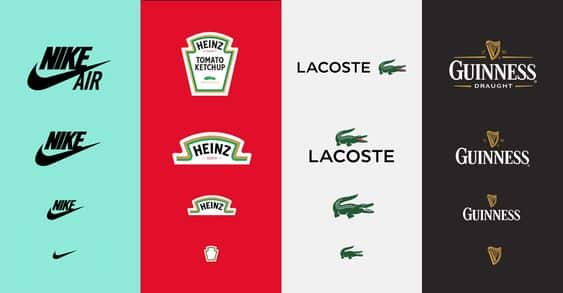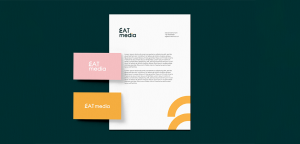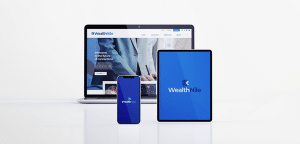Hey there, brand enthusiasts! 🌟 Let’s talk about the latest buzz in the design world: responsive logos. If you’ve ever wondered how to make your brand look fabulous no matter where it shows up—from a giant billboard to a tiny smartwatch—then this trend is for you. Responsive logos are adaptable designs that change in size, shape, and complexity to suit various devices and contexts. Let’s dive into what they are and why they’re such a game-changer for your brand!
What Are Responsive Logos?
So, what exactly is a responsive logo? Imagine your logo as a chameleon, seamlessly adjusting its appearance to fit its surroundings. Unlike traditional logos, which are one-size-fits-all, responsive logos are versatile and dynamic. They’re designed to adapt to different screen sizes, resolutions, and usage contexts. This means your logo can look stunning on a business card and just as impressive on a mobile app icon.
The Evolution of Logo Design
Gone are the days when a single, static logo did the trick. With the explosion of digital platforms, brands need to be everywhere—on websites, social media, apps, and more. Each platform has its own unique requirements, and that’s where responsive logos come in. They ensure your brand remains consistent and recognisable, no matter where it appears.
How Do Responsive Logos Work?
Responsive logos are all about flexibility. Here’s how they typically adapt:
- Simplified Versions: As the display size shrinks, the logo loses some of its intricate details to maintain clarity. Think of it like stripping down to the essentials—simple but still you.
- Alternative Layouts: Depending on the available space, the logo might change its layout. For example, a horizontal logo might stack its elements vertically for narrow displays.
- Icon-Only Versions: For really small contexts, like app icons or social media profile pictures, the logo might be reduced to a single, recognizable element, such as an initial or symbol.
- Colour Adjustments: To maintain visibility and contrast across various backgrounds and devices, the logo’s color scheme might adapt, ensuring it always stands out.
Benefits of Responsive Logos
1. Consistency Across Platforms
One of the biggest perks of responsive logos is consistency. With a responsive logo, your brand maintains a unified identity across all touchpoints. Whether a customer encounters your brand on a smartphone, tablet, laptop, or billboard, they’ll recognize it instantly. This consistency builds trust and recognition.
2. Enhanced User Experience
Responsive logos are designed with the user in mind. By adapting to the size and shape of the screen, they ensure that your brand looks clean and professional everywhere. No more squinting to make out tiny details on a small screen!
3. Improved Load Times
Simplicity isn’t just aesthetically pleasing; it’s also practical. Smaller, simpler logos load faster, which is a big plus for mobile users. Faster load times can lead to better user engagement and even improved SEO rankings. Win-win!
4. Brand Flexibility
A responsive logo gives your brand the flexibility it needs to grow and evolve. As new devices and platforms emerge, your logo can adapt without losing its core identity. This adaptability keeps your brand relevant and modern.
How to Create a Responsive Logo
Ready to jump on the responsive logo bandwagon? Here’s how to get started:
1. Understand Your Brand
Before you start sketching ideas, take a moment to reflect on your brand’s core values, mission, and personality. What do you want your logo to convey? A clear understanding of your brand will guide the design process.
2. Start with a Strong Core Design
Your main logo should be versatile enough to adapt to various formats. It should be simple, memorable, and representative of your brand. Think of this as the foundation upon which all other variations will be built.
3. Create Variations
Develop different versions of your logo for various contexts. This might include a full-detail version for large displays, a simplified version for medium-sized screens, and an icon-only version for small contexts. Remember to consider alternative layouts and color adjustments.
4. Test Across Platforms
Before finalising your designs, test them across different devices and platforms. Make sure each version of your logo looks great and maintains brand consistency. Pay attention to how your logo appears in different resolutions and lighting conditions.
5. Get Feedback
Share your designs with others and gather feedback. Sometimes, a fresh pair of eyes can spot issues you might have missed. Make adjustments based on the feedback and continue refining your designs.
Real-World Examples of Responsive Logos
Let’s check out some brands that are nailing the responsive logo game:
- Coca-Cola: Coca-Cola’s iconic logo has been adapted into various simplified versions for different platforms, maintaining its recognizability and charm.
- Nike: The Nike swoosh is a masterclass in simplicity and adaptability. It looks great on everything from giant billboards to tiny app icons.
- MTV: MTV’s logo adapts by changing its shape and complexity while retaining its edgy and youthful vibe.
Why Your Brand Needs a Responsive Logo
In a world where digital presence is everything, having a responsive logo is no longer optional—it’s essential. Here’s why:
- Future-Proof Your Brand: As technology continues to evolve, new devices and platforms will emerge. A responsive logo ensures your brand is ready to shine, no matter what the future holds.
- Boost Engagement: A clean, professional-looking logo that adapts to its environment can enhance user engagement. People are more likely to interact with a brand that looks polished and thoughtful.
- Stand Out from the Crowd: In a sea of static logos, a responsive logo sets you apart. It shows that your brand is modern, innovative, and in tune with the latest trends.
- Maximize Brand Impact: Every time someone sees your logo, it reinforces your brand identity. By ensuring your logo looks great everywhere, you maximize this impact.
Conclusion
Responsive logos are revolutionising the way we think about brand design. They offer a flexible, modern solution to the challenges of today’s multi-device world. By adapting to different contexts and maintaining a consistent identity, responsive logos help your brand look its best, no matter where it appears.
So, if you’re ready to take your brand to the next level, it’s time to consider a responsive logo. Embrace the trend and watch your brand shine across all platforms!
—
About Us
This article is brought to you by GreatPerhaps, a team of branding and design enthusiasts dedicated to helping businesses navigate the exciting world of modern brand design. Connect with us at and follow us on social media for more tips and inspiration.
Ready to create your own responsive logo? Share your thoughts and ideas in the comments below! Let’s keep the conversation going and help each other create stunning, adaptable brand identities. 🚀







 Add to cart
Add to cart

